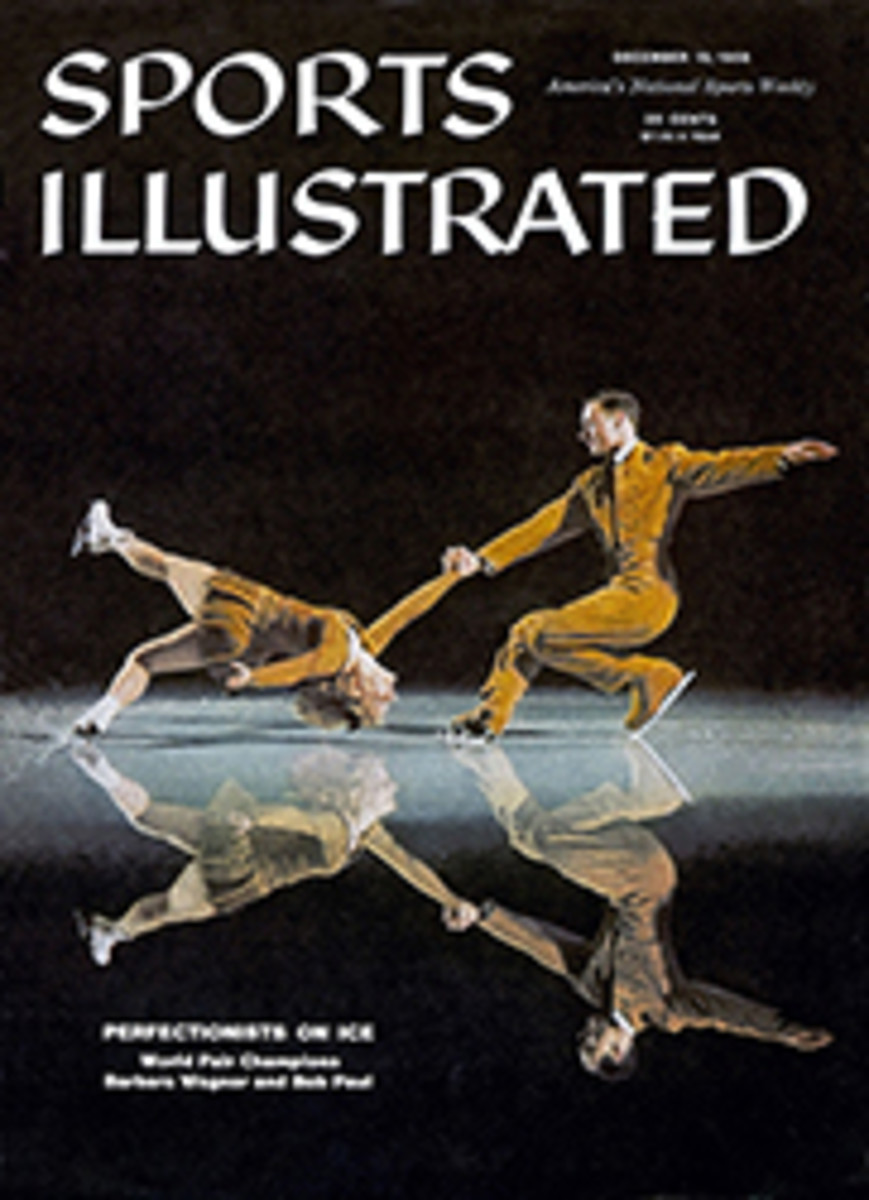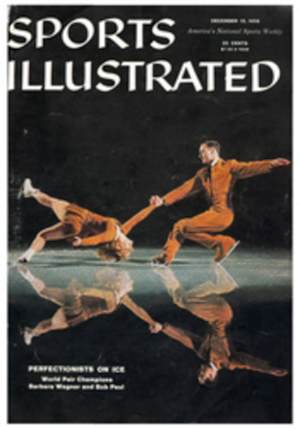
General Gaylord makes a soufflé
Souffles," said the general, "are simply a problem in physics; it takes a certain amount of expanding air to lift a given amount of weight."
In the role of schoolmaster for the moment was General Bradley Gaylord, distinguished soldier in two world wars, currently chairman of the board of the Madison Fund, cutthroat practitioner of a racy version of English croquet (pronounced "croaky") to which he has drawn numerous addicts among neighbors on Cape Cod and the winter resort island of Antigua, B.W.I., and—not least among a variegation of accomplishments in a world of large affairs—amateur chef extraordinary.
Long interested in culinary matters, Gaylord a few years ago got acquainted with André Surmain, owner of Epicure Kitchens and president of a gourmet society called Ambassadeurs du Bien Mangers, who at that time ran a cooking school in New York. The two men became friends and the general took lessons from the Epicurean. It is to this teacher that Gaylord today credits his secrets for making successful soufflés.
In the munificently equipped kitchen of his charming house in Chatham, Mass., the general expounded to me on the subject while demonstrating the approved Surmain procedure step by step as he prepared the lordly concoction shown on the facing page. Shock troops in support of the operation—a tricky one requiring instant decisions and firm commands—were Mrs. Gaylord and their pretty daughter Barbara.
Every soufflé begins with a base, explained the general, usually no more than a white sauce of butter, flour and either milk or broth, to which is added the beaten yolks of eggs and whatever material may be chosen to give the soufflé its character, sweet or savory (such as chocolate, fruit purée, spinach, mushrooms, etc.). Then the whites of eggs, an elastic substance that forms thousands of tiny air bubbles when beaten, are whipped to just the right stiffness and folded into the mixture. Now when the whole thing is put in the oven and baked the air bubbles that are trapped in those beaten egg whites, expanding with the heat, will lift the soufflé to form the shape and consistency desired.
Here are the general's special tips:
To get the proper "lift," use more egg whites than yolks. As a rule, the proportion should be five whites to four yolks. In separating one from the other, remember that some egg white in the yolks will do no damage, but the least speck of yolk in the whites can be disastrous.
Yolks of eggs can be beaten in any bowl with a rotary beater, but whites of eggs should be beaten with a whisk in a glass, china or copper bowl. (Silver, aluminum or other metal bowls cannot substitute.) Too often soufflés are ruined by overheating the whites; they should be beaten only until a glob taken up on the whisk stands in a peak that just topples over (see photograph above).
Most recipes advise the cook, after preparing the white sauce base and adding egg yolks, to let this mixture cool before adding the beaten egg whites. That direction is absolutely wrong, according to Gaylord. The mixture should be still warm when the beaten egg whites are folded in.
Special equipment recommended by Gaylord includes—for beating the egg whites—the French wire whisk he is shown manipulating above and the 12-inch hemisphere-shaped copper bowl called, with functional exactitude, a bol √† blancs, both of which can be bought at the Bazar Fran√ßais, 666 Sixth Avenue, New York City. Also, for a cloudlike folding-together of materials, a wooden spatula. And here let the general take over in his own words:
"To fold a soufflé together, I shove the beaten whites in the bowl to one side, slip the still-warm white-sauce-yolk mixture into this space and with the wooden spatula gently fold the heavy part onto the light part. Holding the bowl facing inward, I scoop down from the back of the bowl straight toward me, turning the mixture over on itself. I rotate the bowl slightly between each scoop, and stop after completing one full circle.
"Then I pour the whole into an unbuttered dish, filling it level. I run a thumb around the top, a half inch or so in from the edge of the dish, to make a groove in the surface of the mix; this helps form the 'hat' of the soufflé. I place the dish on the lowest rack in a preheated oven, as it is important to have the heat come from below. Oven time depends entirely on the size of the soufflé. A dish about six inches in diameter for two to four persons should be done at 375° for 20 minutes. An eight-inch-diameter dish for six persons should be cooked at 375° for 30 to 35 minutes. By opening the oven door quietly, I can peek at a soufflé while it is cooking without causing it to fall. When the time is almost up, I can test it by slipping a straw into the soufflé; the straw should come out damp, not soggy.
"The French like a soufflé a bit runny inside, or baveaux, as they call it. The English do a firmer soufflé by a slower method—perhaps 50 minutes at 325°—and this is easier for some soufflé beginners. I know that most of you soufflé beginners like the white, straight-sided French dishes; I use any Pyrex or other good baking dish."
To any soufflé beginner who has come this far with the lesson, the general's recipe given below should present no problems.
Apricot and almond soufflé
Serves six
First prepare a thick white sauce as the soufflé base. The general does this in a very heavy copper saucepan, but a beginner should use a double boiler. Melt 6 tablespoons butter, then stir in 6 tablespoons flour till smooth. Cook for a few minutes, then gradually whisk in 2 cups warmed milk and½ teaspoon salt. Cook until thick, then add½ cup sugar and also—stirring madly—½ cups of good apricot jam that has been put through a coarse sieve, plus ½ cup blanched slivered almonds, measured coarsely chopped. Remove pan immediately from fire and set aside to cool slightly while whipping the yolks of 8 eggs with a rotary beater until lemon-colored. Fold yolks into the warm white sauce mixture. Beat 10 whites of eggs as directed above to proper consistency; fold together with the yolk mixture, as directed, and fill an 8-inch-diameter baking dish. Cook 30 to 35 minutes in a preheated 375° oven. If desired, when baking is almost finished, reach into the oven to sprinkle "hat" of the soufflé with powdered sugar from a shaker.
[I enjoyed this most served with whipped cream to which a little powdered sugar and a strong flavoring of Grand Marnier had been added.]
PHOTO
JERRY COOKE
PHOTO
JERRY COOKE
CRITICAL STEP in preparing the soufflé is beating the egg whites to exact stiffness.

